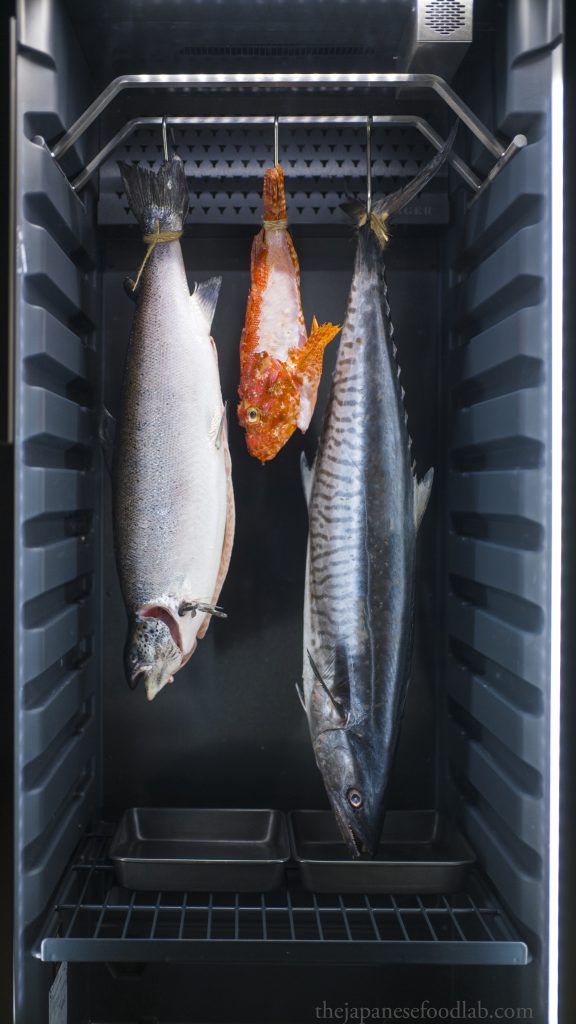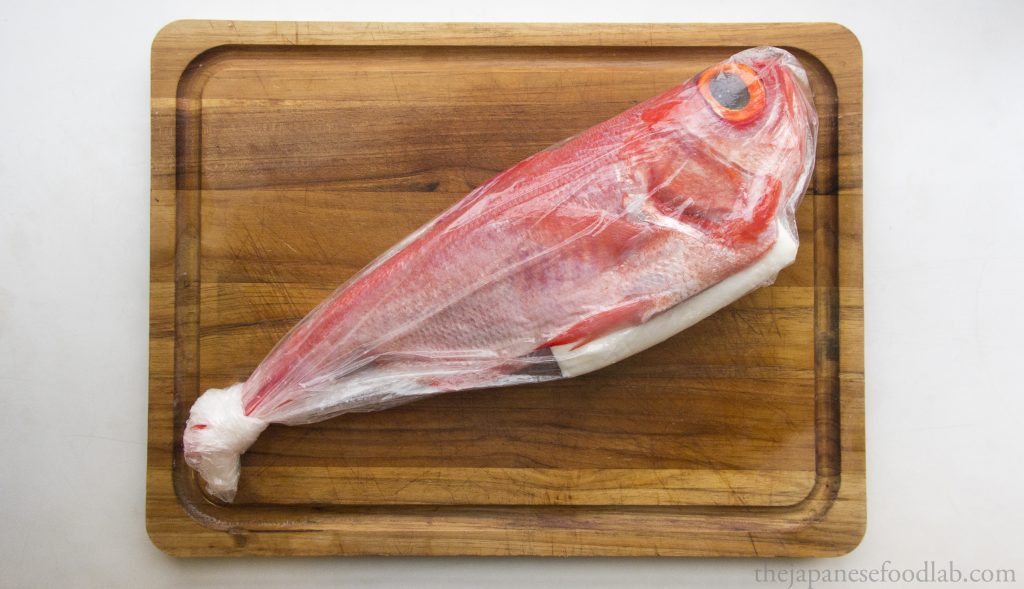This is the first article in our fish aging series. It is followed on by the science of aging fish.
What is aging fish?
In contrast to eating the freshest fish available, dry aging fish is the practice of allowing fish to undergo a natural maturation of a few days to a couple of weeks before consuming. The process is similar to the aging of beef, and is aimed at improving the texture and flavor of the fish. After careful selection and preparation of the fish, it is then stored and monitored in a controlled environment where variables such as temperature, humidity and air circulation are strictly regulated in order to prevent spoilage and achieve the optimal flavor. The two main ways to age fish are wet aging or dry aging.

What is wet aging fish?
Wet aging fish is a technique found almost exclusively in Japan, and is used by Edomae sushi chefs to improve the texture and flavor of the fish. Here, fish that have been gutted and cleaned are sealed in plastic bags and allowed to rest in a temperature controlled fridge for around 3 to 10 days. During this time, enzymes already present in the flesh of the fish continue to work, improving the texture of the fish.
One important difference between wet aging and dry aging is that because the fish is sealed in plastic, any excess moisture released by the fish is unable to escape, and thus the fish ages at almost 100% humidity, regardless of fridge humidity. This means that any exposed flesh does not dry out, and the skin of the fish remains moist.
What is dry aging fish?
Contrary to other opinions, we feel that dry aging fish is a modern technique derived from the process of dry aging beef. It does not have any relation whatsoever to Japan but is still a technique that can improve the texture and flavor of fish. To dry age fish, fish that have been scaled and gutted are hung bare in a specialized fridge for 7 to 90 days depending on the type of fish. Similar to wet aging, enzymes already present in the flesh of the fish continue to work, improving the texture of the fish by breaking down connective tissues and muscle fibers.
As the fish is in direct contact with the fridge environment, it gradually loses moisture, leading to a more concentrated flavor. The outer skin of the fish also dries out, allowing you to more easily crisp up the skin during cooking.
Because you can dry-age fish for longer periods of time, successfully dry-aging fish requires the maintenance of an extremely consistent temperature and humidity, which means that it is usually impossible to do so in a home refrigerator. Added to that, the specialized fridges needed to meet the requirements for dry aging can be prohibitively expensive for a home enthusiast.

The difference between dry and wet aging fish
Because of the sealed environment, one key difference is that wet aged fish does not lose moisture. As such, the flavor development in wet-aged fish is notably much less pronounced compared to dry-aged fish. The weight of wet aged fish is constant throughout the entire process but during dry-aging, you can sometimes lose up to 2-4% in weight per day.
Wet aged fish also cannot be left to mature as long because of the high moisture levels surrounding the fish which allows bacteria to grow much quicker. This environment also means that the skin of wet aged fish does not dry out like dry aged fish, and thus cannot be crisped up for cooked preparations.
Both wet and dry aging require you to source the freshest fish possible, but because of its relatively longer aging period, proponents of dry aging call for not only fresh fish, but fish that has been dispatched using the ikejime method, in addition to other stringent requirements.
To begin….
To start aging fish yourself, we recommend reading our articles on the science of aging fish to better understand the background processes, before looking at how to choose and prepare fish for aging.